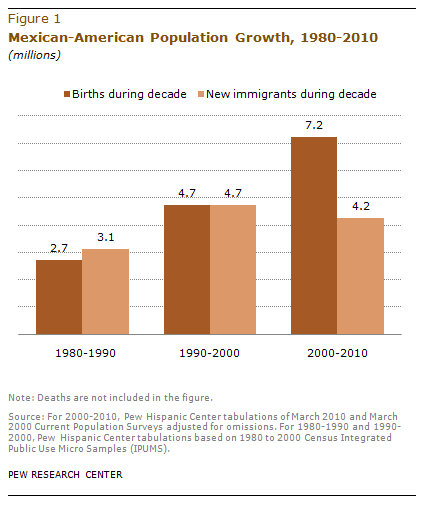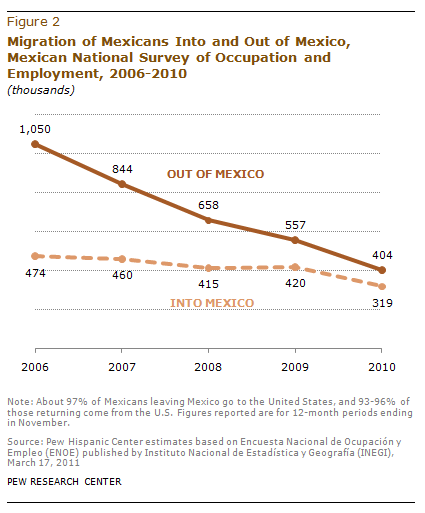Hispanic Population Growth Now Driven More by Births, Not Immigration
From a Pew Research Center analysis of the latest Census data:
In the decade from 2000 to 2010, the Mexican-American population grew by 7.2 million as a result of births and 4.2 million as a result of new immigrant arrivals. This is a change from the previous two decades when the number of new immigrants either matched or exceeded the number of births.
The current surge in births among Mexican-Americans is largely attributable to the immigration wave that has brought more than 10 million immigrants to the United States from Mexico since 1970. Between 2006 and 2010 alone, more than half (53%) of all Mexican-American births were to Mexican immigrant parents. As a group, these immigrants are more likely than U.S.-born Americans to be in their prime child-bearing years. They also have much higher fertility.

(Source: The Pew Hispanic Center, a project of the Pew Research Center)
Mexican immigration has also fallen substantially in recent years:
According to a Pew Hispanic Center analysis of Mexican government data, the number of Mexicans annually leaving Mexico for the U.S. declined from more than one million in 2006 to 404,000 in 2010-a 60% reduction.2 This is likely a result of recent developments in both the U.S. and Mexico. On the U.S. side, declining job opportunities and increased border enforcement (Passel and Cohn, 2009) may have made the U.S. less attractive to potential Mexican immigrants. And in Mexico, recent strong economic growth may have reduced the “push” factors that often lead Mexicans to emigrate to the U.S. As a result, there were fewer new immigrant arrivals to the U.S. from Mexico in the 2000s (4.2 million) than in the 1990s (4.7 million). However, the Mexican-American population continued to grow rapidly, with births accounting for 63% of the 11.2 million increase from 2000 to 2010.

Source: The Pew Hispanic Center, a project of the Pew Research Center

Comments